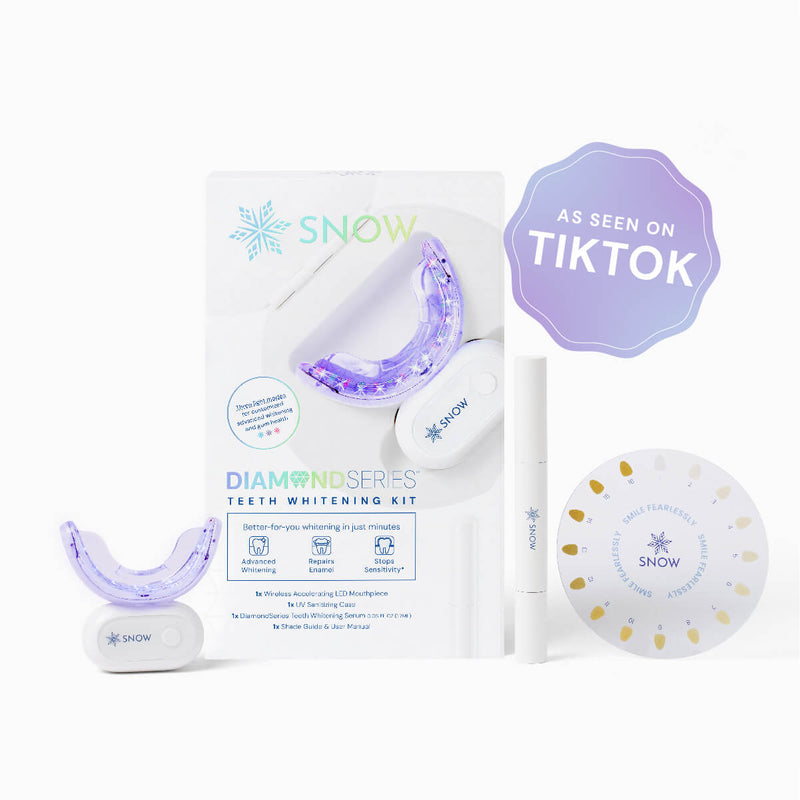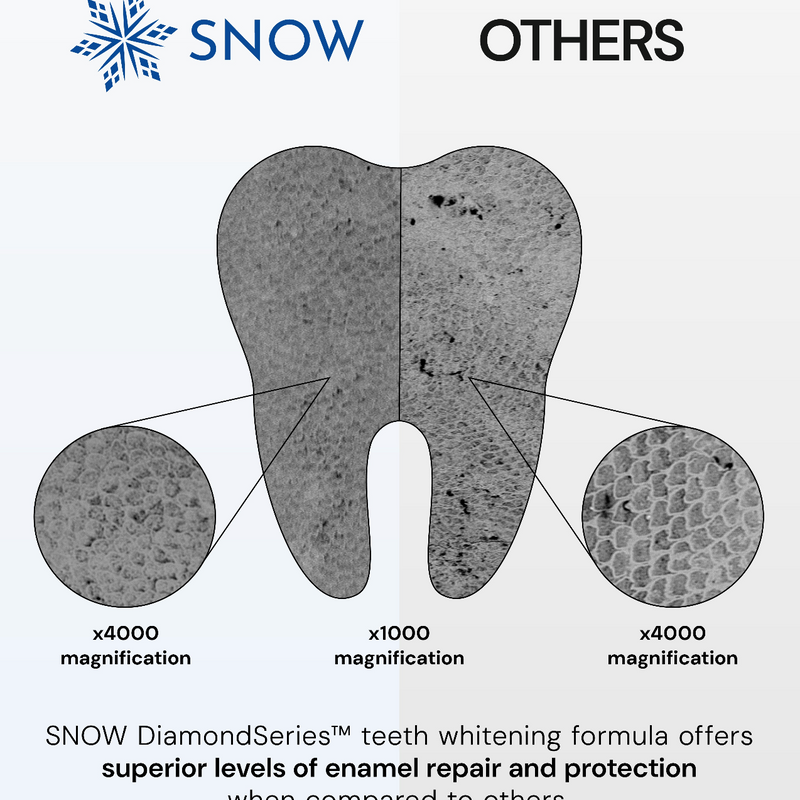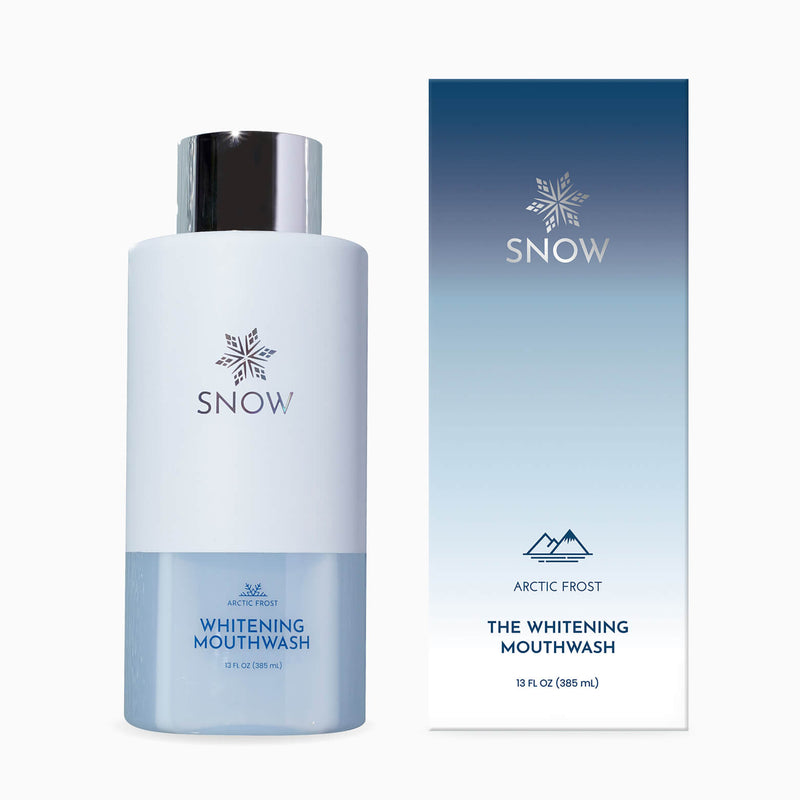A key aspect of maintaining proper oral hygiene is holding your brush correctly. So, how should you hold the toothbrush during brushing? Hold your toothbrush at a 45-degree angle to your gums for effective cleaning.
At SNOW, our expertise in dental health ensures you get the best advice for your oral care routine.
This guide will explore the optimal way to hold your toothbrush, the best brushing techniques, and some common pitfalls to avoid, helping you achieve a healthier, whiter smile with ease.
What this article covers:- What Angle Should You Hold Your Toothbrush at and Why?
- What's the Right Brushing Technique?
- How to Brush Your Teeth Properly: A Step-By-Step Guide
- Teeth Brushing FAQs
What Angle Should You Hold Your Toothbrush at and Why?
You should hold your toothbrush at a 45-degree angle to your gums. This angle allows the bristles to reach both your teeth and the gum line, effectively removing plaque and debris.
According to CNET, using this angle ensures that the bristles can clean below the gum line where bacteria often hide.
Gently move the brush back and forth in short strokes, covering all surfaces of your teeth: the outer, inner, and chewing surfaces. This technique not only helps in thorough cleaning but also prevents gum damage by avoiding harsh scrubbing.
What's the Right Brushing Technique?
There are several recommended techniques for brushing your teeth.
Here are three of the most effective:
Bass Or Sulcular Technique
The Bass technique involves placing the toothbrush at a 45-degree angle to the gums, using gentle back-and-forth motions to clean the gum line and teeth. This method is excellent for removing plaque from below the gum line, which helps prevent gum disease.
In accordance with information on WikiHow, this technique is particularly effective when using an electric toothbrush, ensuring a thorough clean with minimal effort.

Stillman Technique
Similar to the Bass technique, the Stillman method also involves a 45-degree angle but includes a sweeping motion. Start with the brush bristles on your gums and gently sweep them towards the biting surface of the teeth.
This technique stimulates the gums and removes plaque effectively.
The SNOW LED Teeth Whitening Electric Toothbrush can enhance this technique with its advanced features.
Charter Technique
For the Charter technique, position the brush at a 45-degree angle towards the gum line, but this time, the bristles should be pointing towards the biting surface rather than the root of the teeth.
This method is particularly useful for those with braces or other orthodontic devices, as it helps to clean around appliances (MouthHealthy).
Using a specialized teeth whitening toothpaste can further improve the effectiveness of this technique.
Using the right brushing technique is crucial for maintaining optimal oral health. Incorporating these methods into your routine can help ensure a cleaner, healthier smile.
How to Brush Your Teeth Properly: A Step-By-Step Guide
This section will walk you through a step-by-step guide to ensure you are brushing your teeth correctly.
From choosing the right equipment to brushing all surfaces of your teeth, following these steps will help you achieve a cleaner, healthier smile.
Start With The Right Equipment
Understanding the importance of toothbrush selection and maintenance is crucial for effective oral hygiene.
Pay close attention to the electric toothbrush features you want to make use of. Use a soft-bristled brush that fits comfortably in your mouth. A powered toothbrush can also be effective, especially for those who have difficulty with manual brushing.
Learn how to pick a toothbrush that suits your specific dental needs for optimal cleaning. If your electric toothbrush head stops spinning, check the battery or consult the manufacturer's troubleshooting guide.
Drawing on our years of research, we've found that soft bristles are gentle on your gums and enamel, preventing damage while effectively removing plaque.
The SNOW LED Teeth Whitening Electric Toothbrush is an excellent choice for those seeking an advanced brushing solution. Consult your dentist about using an electric toothbrush after wisdom teeth removal to ensure proper healing.

Apply The Correct Amount Of Toothpaste
A pea-sized amount of fluoride toothpaste is sufficient. This amount provides the necessary fluoride to protect against cavities without wasting toothpaste.
Fluoride is essential for strengthening enamel and preventing decay, as highlighted by the American Dental Association (ADA).
Hold Your Brush Correctly
Angle the brush at 45 degrees to the gums. This position allows the bristles to clean below the gum line where plaque and bacteria accumulate.
Proper angling is crucial for effective cleaning and preventing gum disease.
Brush All Surfaces
Spend at least 30 seconds on each quadrant of your mouth. Ensure you brush the outer surfaces, inner surfaces, and chewing surfaces of all teeth.
This thorough approach ensures that no area is neglected, reducing the risk of plaque buildup and cavities (MouthHealthy).
Use Short, Gentle Strokes
Avoid vigorous scrubbing, which can damage your enamel and gums. Gentle, short strokes are more effective and safer for your teeth and gums.
Overbrushing can lead to enamel erosion and gum recession.
Clean Your Tongue
Brush your tongue to remove bacteria and freshen your breath. The tongue can harbor bacteria that contribute to bad breath and plaque formation.
Regularly cleaning your tongue is an important part of your oral hygiene routine. Consider using storage for family toothbrushes to keep them clean and organized.
By following these steps, you can ensure that you are brushing your teeth effectively, maintaining good oral health, and achieving a brighter smile.
Teeth Brushing FAQs
How long should you brush your teeth?
You should brush your teeth for at least two minutes. We strongly recommend doing that twice a day.
This duration ensures that you have enough time to thoroughly clean all areas of your mouth.
Can you brush your teeth too much?
Yes, overbrushing can damage your enamel and gums. Brushing more than three times a day or using a toothbrush with hard bristles can lead to enamel erosion and gum recession.
Stick to brushing twice daily with a soft-bristled brush to maintain optimal dental health.
How can you tell if your teeth are clean enough?
A simple test to check the cleanliness of your teeth is to run your tongue over them after brushing. Your teeth should feel smooth and free of any film or residue.
Regular dental check-ups can also help ensure that your brushing technique is effective and that your teeth are properly cleaned.
Conclusion
Brushing your teeth correctly is crucial for maintaining a healthy and bright smile.
By holding your toothbrush at the right angle, using proper techniques, and brushing for the recommended duration, you can effectively remove plaque and prevent dental issues.
Remember, good oral hygiene is an investment in your overall health.
For more tips on maintaining a bright smile, consider checking out SNOW's LED Teeth Whitening Electric Toothbrush, designed to enhance your brushing experience with advanced technology. Check out SNOW teeth whitening for more information.
If you want to learn more, why not check out our related posts:
- What Is the Most Popular Toothbrush Color
- How Much Toothpaste Should You Put on a Toothbrush
- How Many Bristles Are on a Toothbrush?
- Are Soft Toothbrushes Good?
- Electric Toothbrush Side Effects
- Why Do My Toothbrush Bristles Get Hard?
- Are Mouthpiece Toothbrushes Effective?
- What’s a Good Toothbrush?
- Dentist Recommended Electric Toothbrush
- Do Electric Toothbrushes Have Lithium Batteries?
- How to Brush Tongue with Electric Toothbrush
- Is the Back of a Toothbrush for Your Tongue?
- Are Battery-Operated Toothbrushes Any Good?
- Can You Bring Electric Toothbrush on Plane?
- Travel Electric Toothbrush
























